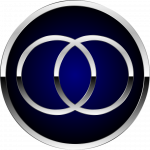

Have you ever wondered what shape a doughnut really is? It is actually called a torus! There are many other shapes you may recognise, but you didn’t realise have specific names.
The almond-like shape in the middle of the two intersecting circles, which may remind you of a Venn diagram, is called vesica piscis. The literal Latin translation of this is “fish bladder”!

Another shape you will recognise is the sideways figure of 8. This is known as lemniscate, and is often referred to as the infinity symbol. Lemniscate comes from the Latin word, lēmniscātus, meaning “decorated with ribbons

There are many more weird and wonderful shapes and shape names. For example, the squircle. Strangely enough, this is a cross between a square and a circle. Or how about a heptagram – which is a seven pointed star. There is also a Möbius strip, otherwise known as a twisted cylinder. It is made by fixing the ends of a rectangular strip after giving one of the ends a half twist. This leads to some unusual properties, where it only appears to have one side. If an ant walks along the edge of the strip, he’ll travel twice as long as the loop before he gets back to his starting point.
If you need some more help with shapes then try Part 2 of our “How to work with Shapes” revision guide. It describes what congruent shapes are, and outlines rules to spot congruent triangles. A description of similar shapes is also included, again with rules on how to spot similar triangles. You can check your understanding using example questions and answers.
Click on the picture below to see the guide.
If you found this useful and think you would benefit from some additional help, please contact us.
Guest bloggers are welcome.
